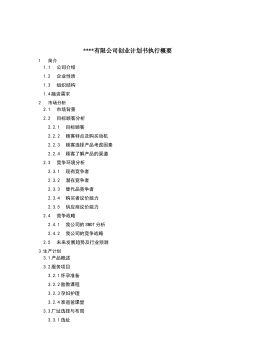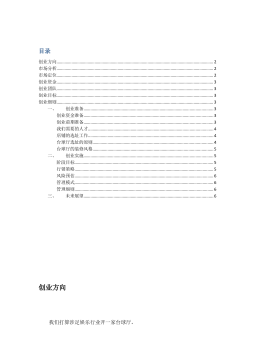换热器表面碳酸钙垢析晶过程与换热的实验研究
VIP免费
摘 要
污垢的存在不仅使换热设备的换热效率下降,浪费能源、资源,产生巨大经
济损失而且使很多能源高效利用的技术方法失去可行性,如低品位能源的利用、
高效强化换热技术等。因此,污垢在流体中的形成、扩散和在换热表面的粘附、
生长等过程和特性的研究是抑制污垢生长技术发展的前提。评价强化管的强化换
热效果要观测在洁净状态和结垢状态下不同材质和不同强化方式的强化换热管的
换热系数,并以此为目标函数来优化强化管的强化方式和参数。
在碳酸钙析晶污垢结垢初始阶段静态实验中,将换热设备常用的金属材料(紫
铜、黄铜、不锈钢 304 和316)做成实验挂片垂直悬挂于碳酸钙过饱和溶液中,在
溶液温度分别为 35℃和 60℃,碳酸钙浓度分别为 0.5mmol/l 和1.0mmol/l,溶液 pH
值分别为 10 和11 时,共 32 种实验工况,详细研究了在无流体流动的扰动和重力
作用下,溶液中成垢物质通过成垢粒子表面反应机理和污垢颗粒扩散粘附机理两
种生长方式控制下以及两种生长机理之间竞争机制下,不同水质参数(溶液温度、
碳酸钙浓度、溶液 pH 值)和金属材料下,结垢量、诱导期和表面碳酸钙污垢的晶
型、比例和尺寸等生长特性。探究碳酸钙溶液从过饱和、诱导期到生长阶段前期
这一结垢初始阶段,Ca2+和CO32-在溶液中和换热表面发生的成核、晶核长大、絮
凝团聚、扩散、粘附等过程中的热力学、动力学、力学和生长机理等规律做了深
入研究和分析归纳。结果表明:当流体中碳酸钙处于过饱和状态时,首先本体溶
液中进行均相成核及晶核生长,形成的污垢颗粒其中一部分通过扩散和粘附而附
着在换热表面或表面污垢上使换热表面结垢增多;过饱和溶液与换热表面浸润一
段时间后,碳酸钙成垢粒子在换热表面进行异相成核及晶核生长,也使换热表面
结垢增多。当流体水质参数改变或换热表面参数发生变化时,会影响这两种结垢
方式的强弱,从而改变换热表面结垢量。如果流体水质参数改变使碳酸钙过饱和
度(饱和指数)很小或很大时,换热表面结垢量均较少;只有当碳酸钙过饱和度
(饱和指数)适中时,才会使表面结垢量最多。
但在实际工程应用中,均存在着流体流动和重力沉降的作用,换热表面上结
垢使传热效率降低, 流动阻力增大, 因此造成能源损失和浪费、甚至造成安全事故。
因此, 人们在采用传热效果较好的强化管来提高传热效率的同时,也日益关注其抗
垢性能。本文在碳酸钙析晶污垢结垢静态实验基础上又进行了动态实验,对两种
斜翅管(平直斜翅管和锯齿斜翅管)和光管进行对比实验,研究不同流体参数,
即流速(0.04m/s 和0.07m/s)和碳酸钙浓度(0.5mmol/l、1.0mmol/l 和2.0mmol/l)
和斜翅管的强化参数(实验中仅改变了肋形,未进行翅高、翅数和翅间距等参数
的改变)对结垢前后强化传热比和污垢热阻以及结垢诱导期的影响,以求获得更
好的强化传热比和抗垢性能。结果表明:流速增大时使成垢物质的扩散传质系数
增大也使表面污垢晶体受到的剥蚀剪力增强,两个相反作用的强弱则要视具体流
体流态、换热管参数等情况而定,实验中浓度越小流速改变时污垢热阻相差越小。
相同条件下,浓度增大使结垢量和污垢热阻增大。锯齿斜翅管的结垢量和污垢热
阻均高于平直斜翅管,但其总换热系数和强化换热比仍高于后者,两种斜翅管的
结垢量和污垢热阻与光管相差不大,但总换热系数远高于光管,因此在洁净状态
和结垢状态下均具有较好的传热效果。
本课题受到上海市重点学科建设项目(S30503)和上海市研究生创新基金第
五期(JWCXSL1101)的支持。
关键词:碳酸钙析晶污垢 初始阶段 强化换热 表面反应 扩散粘
附
ABSTRACT
Both the heat transfer efficiency of heat transfer equipments decreases and the
energy and resources are wasted by fouling. So there is enormous economic loss and
even make the technologies and methods of high-efficient energy use infeasible, such as
low-grade energy use, high-efficient heat transfer enhancement technology and so on.
Therefore, the processes and characteristics of the fouling form and diffusion in fluid,
then adhesion and growth on heat transfer surface must be totally researched. It is the
prerequisite to develop the technologies of repression the growth of fouling. The
evaluation of heat transfer efficiency of enhanced tubes must measure the heat transfer
coefficient at both clean condition and fouling condition of different materials and
enhancements of enhanced tubes. And the heat transfer efficiency at both clean and
fouling conditions is set as the objective function to optimize the enhancements and
parameters of enhanced tubes.
At the static experiments of the initial stage of calcium carbonate crystallization
fouling, the common used materials in heat transfer equipments (copper, brass, stainless
steel304 and 316) was produced as coupons which was vertical suspended in the
calcium carbonate super-saturation solution. The temperature of the solution is 35℃
and 60℃, the concentration is 0.5mmol/l and 1.0mmol/l and the pH value is 10 and 11,
so the experiment conditions are 32 in all. The growth menchanisms of foulant ions
reaction at heat transfer surface and fouling crystal particles diffusion and adhesion on
surface and the competition relationship between them have been detailed researched
without fluid flow and gravitational settling influence. The characteristics of fouling
mass, induction period and the crystal phases, proportion and size of fouling crystals
and so on at different water chemical parameters and metal materials have been
researched, too. The initial stage processes include the fluid from super-saturation,
induction period to the earlier stage of growing period. The thermodynamical, kinetic
and mechanical regulation and growth mechanism of Ca2+ and CO32- nucleation, growth,
flocculation, reunion, diffusion and adhesion and so on have got. The results show that
when the fluid is super-saturated, the homogeneous nucleation and nuclei grow firstly
happened in bulk solution, part fouling crystal particles diffusion and adhesion on the
heat transfer surface or the fouling crystals on heat transfer surface. After the fluid
wetting the heat transfer surface, the calcium carbonate ions and moleculars will
heterogeneous nucleation and nuclei grow on heat transfer surface. If the water
chemical parameters or heat transfer surface change, the two fouling growth rates also
change and the fouling mass on surface will be affected. If the water chemical
parameters make the super-saturation or saturation index very small or very big, the
fouling mass is both less; only when the super-saturation or saturation index is moderate,
the fouling mass will be more.
But actually, the fluid flow and gravitational settling are both exist. Fouling on heat
transfer surface not only decreases the heat transfer efficiency but also increases the
flow resistance. So, to enhance the heat transfer coefficient of enhanced tubes, the
anti-fouling performance shall also improve. This paper did the dynamic experiments
which used the plain tube and two oblique fin tubes and different velocity (0.04m/s and
0.07m/s), calcium carbonate concentration (0.5mmol/l, 1.0mmol/l and 2.0mmol/l). The
influences of different parameters on heat transfer enhancement, fouling resisrance and
induction period at both clean and fouling conditions have got to the best heat transfer
enhancement and anti-fouling performance of enhanced tubes. The results show that the
diffusion coefficient of foulant substance and the denudation shear are both increase
when the fluid velocity increase. The two opposing effects which is more important
depends on the flow pattern, calcium carbonate concentration and heat transfer tube and
so on. At the same conditions, the fouling mass and resistance are bigger when
concentration is bigger. The fouling mass and resistance of saw-tooth oblique fin tube
are bigger than straight oblique fin tube, but the heat transfer coefficient and heat
transfer coefficient enhanced ration are bigger. The fouling mass and resistance of two
oblique fin tube and plain tube are no big difference, but heat transfer coefficient are
well above plain tube, so the oblique fin tubes have greater heat transfer performance at
both clean and fouling conditions.
This research is support by the Shanghai Leading Academic Discipline Project
(S30503) and the Innovation Fund Project For Graduate Student of Shanghai
(JWCXSL1101).
Key Words: Calcium carbonate crystallizaition fouling, Initial stage,
Heat transfer enhancement, Surface reaction, Diffusion and adhesion
目 录
中文摘要
ABSTRACT
第一章 绪 论 .............................................................................................................. 1
1.1 研究背景 .......................................................................................................... 1
1.2 污垢研究的发展简史 ...................................................................................... 3
1.3 抗垢强化换热技术研究进展 .......................................................................... 4
1.4 析晶污垢诱导期研究进展 .............................................................................. 6
1.4.1 污垢分类 ................................................................................................ 6
1.4.2 污垢形成过程 ........................................................................................ 7
1.4.3 析晶污垢诱导期 .................................................................................... 9
1.5 本文主要研究内容及创新点 ......................................................................... 11
1.5.1 本文主要研究内容 ............................................................................... 11
1.5.2 创新点 .................................................................................................. 12
第二章 碳酸钙析晶污垢生长过程分析 .................................................................... 14
2.1 结垢过程热力学分析 .................................................................................... 15
2.2 结垢过程动力学分析 .................................................................................... 20
2.3 结垢过程力学分析 ........................................................................................ 21
2.3.1 范德华力 .............................................................................................. 22
2.3.2 静电双层力 .......................................................................................... 23
2.3.3 流体剥蚀剪力 ...................................................................................... 24
2.4 结垢过程的控制机理分析 ............................................................................ 26
2.5 结垢饱和指数分析 ........................................................................................ 29
2.6 本章总结 ........................................................................................................ 35
第三章 静态实验及结果分析 .................................................................................... 38
3.1 碳酸钙污垢静态实验系统 ............................................................................ 38
3.1.1 实验目的 .............................................................................................. 38
3.1.2 实验原理 .............................................................................................. 38
3.1.3 实验系统简介 ...................................................................................... 39
3.1.4 实验步骤 .............................................................................................. 40
3.2 实验结果与分析 ............................................................................................ 41
3.2.1 结垢量 .................................................................................................. 41
3.2.2 污垢微观形貌 ...................................................................................... 47
3.2.3 pH 值对结垢过程的影响 .................................................................... 62
3.2.4 碳酸钙浓度对结垢过程的影响 .......................................................... 86
3.2.5 温度对结垢过程的影响 ...................................................................... 86
3.2.6 金属材料对结垢过程的影响 .............................................................. 88
3.2.7 过饱和度和饱和指数对结垢过程的影响 .......................................... 95
3.3 本章总结 ........................................................................................................ 95
第四章 动态实验及结果分析 .................................................................................... 98
4.1 碳酸钙污垢动态实验系统 ............................................................................ 99
4.1.1 实验系统简介 ...................................................................................... 99
4.1.2 实验步骤 ............................................................................................ 101
4.2 污垢热阻动态测量原理 .............................................................................. 103
4.3 实验结果与分析 .......................................................................................... 104
4.3.1 结垢诱导期 ........................................................................................ 104
4.3.2 污垢热阻 ............................................................................................ 106
4.3.3 污垢形貌 ............................................................................................. 113
4.3.4 流速对结垢过程的影响 .................................................................... 126
4.3.5 浓度对结垢过程的影响 .................................................................... 127
4.3.6 斜翅管管参数对结垢过程的影响 .................................................... 129
4.4 本章总结 ...................................................................................................... 130
第五章 结论与展望 .................................................................................................. 133
5.1 全文总结 ...................................................................................................... 133
5.2 未来展望 ...................................................................................................... 135
主要符号表 .................................................................................................................. 136
参考文献 ...................................................................................................................... 140
在读期间公开发表的论文和承担科研项目及取得成果 .......................................... 148
致 谢 .......................................................................................................................... 150
第一章绪论
1
第一章 绪 论
1.1 研究背景
污垢是指在与流体相接触的固体表面上逐渐积聚起来的那层固态或软泥状物
质,通常是以混合物的形态存在。固体表面从洁净状态到被污垢覆盖的过程,即
污垢的积聚过程,也称为结垢[1]。
污垢涉及领域之广无与伦比,从自然现象到日常生活,从一般换热设备到航
天航海器械都难免其害。污垢是热的不良导体,其热导率一般只有碳钢的数十分
之一,表 1-1 列出了常用换热器金属材料及污垢的热导率,一旦换热面上结垢,按
串联热阻的观点,流体与换热壁面之间的传热热阻就增加为
1
tf
R
R
(1-1)
式中:
f
R
为污垢热阻,即污垢形成的附加热阻,m2·K/W;
t
R为总传热热阻,m2·K/W;
为传热系数,W/(m2·K)。
物质 碳素钢 紫铜 黄铜 碳酸盐水垢 硫酸盐水垢 混合水垢
热导率
(W/m·K) 34.9~52.3 302.4~395.4 87.2~116.3 0.58~5.8 0.58~2.33 0.8~2.33
换热设备的性能取决于传热能力,即传热系数的大小,因此,产生很多种提
高传热系数的方法,即各种强化换热技术。但是由于污垢的附着导致总传热系数
显著降低,使换热设备不能发挥设计性能,因此必须抑制污垢的附着或将其除去[2],
成为强化换热技术必须面对的难题。
污垢的危害主要体现在:
(1)恶化传热性能:换热表面上形成污垢会使传热表面的导热热阻显著增大,
降低传热效率。
(2)增加能量消耗:换热管道上形成污垢则使流通面积减小,增大流动阻力,
使流体的输送设备功耗增加。
(3)威胁设备安全:污垢附着表面导致垢下腐蚀和热点腐蚀,甚至造成点腐
蚀穿孔,严重威胁换热设备的安全运行。
(4)增大初投资和运行费用:一般在设计阶段考虑污垢系数而增大换热面积,
并提高结构要求;在辅助设备中增加了清洗设备和备用设备,这些都使初投资大
大增加。而为了清洗污垢而进行周期性停车,并需要清洗材料等,使运行费用增
表1-1 换热器常用金属材料及污垢的热导率[1]
Table.1-1 Heat conductivity of metal material and fouilng in oil heat exchangers
换热器表面碳酸钙垢析晶过程与换热的实验研究
2
加,降低生产能力和产品质量。
(5)限制新技术的发展:换热面结垢主要限制和降低了各种强化传热技术的
实施和效果。
换热设备污垢所造成的损失是巨大的,由于没有合适的统计方法和统计项目
过于繁琐,仍没有准确统计。
1981 年,Van Nostrand[3]等对美国炼油工业污垢损失费用进行了估算,如表 1-2
所示,可见因污垢导致的能量消耗增加、产量降低和清除污垢的清洗费用造成的
经济损失巨大。
分类费用
设备类型 规模(千桶/天) 能量消耗 产量降低 维护清洗 合计
原油馏分设备 18000 183.6 671.4 6.3 861.3
加氢精制设备 7500 89.2 85.0 4.2 178.4
减黏裂化设备 220 37.3 9.2 2.6 49.1
重整炉 3800 162.6 106.4 2.3 271.3
合计 427.7 872.0 15.4 1360.1
2000 年,徐志明[4]等对污垢所造成的投资增加,额外燃料费用和增加的运行
维护费用三方面对我国电力工业进行了粗略估算。在未考虑产量减少、冗余面积
多占地、增加厂房、送引风机电耗增加、煤和灰的运输等方面的费用,结果表明
2000 年锅炉和凝汽器的污垢总损失费用为 100.08 亿元,约占 GDP 的0.11%。发 达
国家污垢费用约占 GDP 的0.25%[5],而我国仅电力系统中的一部分就占 GDP 的
0.11%,考虑到其他行业污垢造成的损失,我国的污垢费用要远高于发达国家。因
此,减小污垢危害理所当然的成为节能减排的一个重要方面。
污垢研究的意义[1,6]在于:
(1)保障国家战略需求的重要方面:一是提高我国产品竞争力,解决高能耗、
高物耗、高污染、低效益、低质量的问题。
(2)国家当前高新技术产业化的六大重点技术方向之一的新能源与节能技术
的重要组成部分,并且与全球性资源与环境问题密切相关。。
(3)践行学科交叉融合的理想领域:污垢对策的有效性取决于对污垢机理把
握的准确程度和对污垢状态实时监测的可靠程度,而对污垢机理的准确把握仍是
亟待解决的难题。因为从污垢的多样性和复杂性看,涉及到传热传质学、化学动
力学、胶体化学、表面科学、微生物学等基础或应用学科的相关知识。此外还要
应用现代生物技术、纳米技术、微电子技术和膜分离技术等用以开发更有效且环
表1-2 全美炼油工业与污垢有关费用(百万美元)
Table.1-2 Cost of fouling in oil refining industry in America (million dollar)
第一章绪论
3
境友好的污垢对策技术,因此,污垢研究是进行学科交叉融合的理想领域。
(4)培育新技术新产业的沃土。历史上,由于抑垢的需要,发展起了水处理
行业;抑垢不果,又出现了除垢的需要,催生了清洗行业;近些年来,随着污垢
研究的进一步深入,表面改性防垢技术、绿色清洗技术、利用微生物处理污水的
生物技术、物理法和化学法相结合的 AMT 技术、用于污垢检测的新型传感器以及
软测量技术等新技术如雨后春笋,因此污垢研究是催生新技术新产业的沃土。
(5)污垢研究可能产生的经济效益和社会效益都十分巨大。以电力工业为例:
如果有效的污垢对策使火电煤耗降低 1g 标煤/kWh,按 2004 年我国火电发电量
15214.5 亿kWh 计,可节约标煤约 152 万吨,还可减少粉尘排放 5500 吨,分别减
少CO2和SO2排放 230 和2.3 万吨,故对减轻环境污染的作用十分明显。
1.2 污垢研究的发展简史
1990 年,Somerscales[7]将污垢发展史分为四个阶段:
(1)水垢时代(1920 年以前):该阶段研究主要集中在水垢现象的观察、影
响因素的分析和对策方面。Reutlinger[8]首次测量了污垢层热阻。McAdams[9]给出
了洁净系数的定义:受污染表面的总传热系数和洁净表面的总传热系数之比。
(2)污垢描述与测量时代(1921-1935):该阶段的重要进展是在污垢的定量
描述和对策方面。McAdams[10]等首次将 Wilson 方法用于确定污垢热阻。Hardie 和
Cooper[11,12]在对一台运行了近 10 年的凝汽器的一系列实验中获得了洁净系数的可
信数值。Hall[13,14]建立了最早的锅炉水处理方法,有效控制了锅炉水侧换热面的污
垢问题。Frost 和Rippe[15]等发明了间歇性加氯以杀灭微生物的技术。
(3)污垢系数时代(1936-1945):该时期主要集中于换热器设计中如何计入
污垢影响和进行合理清洗的问题。Sieder[16]率先向 ASME(美国机械工程师协会,
American Society of Mechanical Engineers)推荐了污垢系数。Samons[17]以污垢系数
表述了污垢数据,虽然这些数据很有限,使得寻求比洁净系数更好方法的工程师
们很失望。Nelson[18]提供了一些析晶垢的污垢系数和应用污垢系数的算例,对污
垢系数的推广起了推动作用。几年后,美国管式换热器制造商协会(TEMA,Tubular
Exchanger Manufacturers Association)将其汇集并作为换热器标准的一部分而出版
[19],且一直沿用至今。
(4)污垢研究的科学时代(1946-):1959 年Kern 和Seaton[20,21]针对污垢系
数没有揭示出污垢时变性的不足,提出了单位面积上污垢沉积量的净增长率等于
沉积率与剥蚀率之差的微分形式的污垢分析模型,即 Kern-Seaton 模型。该模型很
快得到了广大科技人员的认同,为污垢研究树立了一座不朽的里程碑。Hasson[22,23]
首次将换热面上碳酸钙的结晶析出过程当作传质过程来模拟,并基于 Kern-Seaton
换热器表面碳酸钙垢析晶过程与换热的实验研究
4
模型得到了析晶污垢的分析模型。从此,开始了世界范围内对污垢的结构、化学
组成和形成过程的比较系统的研究。1978 年,Epstein[24]将污垢列入第六届国际传
热大会的讨论主题之一,并在会上做了专题报告,并提出按支配污垢沉积的物理/
化学过程,将污垢分为析晶污垢、颗粒污垢、化学反应污垢、腐蚀污垢、生物污
垢和凝固污垢 6类,成为污垢研究的又一重要里程碑。1983 年,Epstein[25]将污垢
的形成过程分为起始、输运、附着、剥蚀和老化五个阶段,对污垢的认识又向前
推进了一步。1984 年,Sheikholeslami[26]首次报道了强化换热面及材质对水垢影响
的研究,开始了强化传热与污垢之间的相互影响的研究。
葡萄牙的 Pinheiro、Melo 和英国的 Bott 合作进行了生物污垢与颗粒污垢相互
影响的实验研究[27],开创了混合污垢研究的先河。80 年代末,杨善让等对析晶污
垢与颗粒污垢共生时的污垢热阻预报进行了实验研究[28]。鲍其鼐[29]基于模拟实验
数据,回归了确定渐近污垢热阻的指数函数。杨善让[30]等研制了螺旋线型除垢强
化器,首次将强化传热技术和除垢技术结合实施,并对其传热特性、阻力特性和
结构优化做了较系统的研究。杨传芳[31]等将离子注入技术应用于延长换热面污垢
诱导期的研究,为采用表面改性技术防治污垢展现了诱人前景。
现在污垢研究基本沿着三个方向发展[32]:一是对污垢的形成过程进行理论分
析和实验研究,为换热设备的设计者和运行人员提供通用的预测模型;二是污垢
监测技术的开发研究;三是污垢的对策研究。
1.3 抗垢强化换热技术研究进展
尽管报道沸腾表面污垢特性的文献也越来越多,但是大部分污垢研究关注于
光管中的单相流,而强化换热管的结垢研究越来越多。很多研究者研究了强化管
的结垢现象来观测强化管相对于光管是否能够减轻结垢程度。
1959 年,Knudsen[33]等人就开始关注强化换热面的污垢特性。
关于螺旋槽管的抗垢性能研究。Sheikholeslami[26]等发现相比光管,螺旋槽强
化管具有较低的渐近污垢热阻。Rabas[34]等人对包括螺旋槽管在内的多种强化管进
行了工业实验,在凝汽器中将光管和强化管捆绑运行,得出强化管污垢速率大于
光管的结论。徐志明[35]等人在同一实验条件下,得到螺旋槽管的渐近污垢热阻值
约为光管的 1.36 倍,即螺旋槽管的阻垢性能弱于光管;洁净时螺旋槽管的强化比
为1.3 而结垢时强化比为 1.1。帅志明[36]等人对螺旋槽管和光管进行了污垢特性的
对比实验,却得出相反结论,即螺旋槽管的抗垢性能优于光管,同时发现冷水流
速增大时螺旋槽管抗结垢能力增强,而螺旋槽管参数对结垢影响不大。钱颂文[37]
等人的实验结果表明,螺旋槽管的污垢热阻仅为光管的 52% ~71%,且流速越高污
垢热阻越小,而槽深越大,防垢性能就越好。朱冬生[38]等人的研究发现,管参数
摘要:
展开>>
收起<<
摘要污垢的存在不仅使换热设备的换热效率下降,浪费能源、资源,产生巨大经济损失而且使很多能源高效利用的技术方法失去可行性,如低品位能源的利用、高效强化换热技术等。因此,污垢在流体中的形成、扩散和在换热表面的粘附、生长等过程和特性的研究是抑制污垢生长技术发展的前提。评价强化管的强化换热效果要观测在洁净状态和结垢状态下不同材质和不同强化方式的强化换热管的换热系数,并以此为目标函数来优化强化管的强化方式和参数。在碳酸钙析晶污垢结垢初始阶段静态实验中,将换热设备常用的金属材料(紫铜、黄铜、不锈钢304和316)做成实验挂片垂直悬挂于碳酸钙过饱和溶液中,在溶液温度分别为35℃和60℃,碳酸钙浓度分别为0....
相关推荐
-
跨境电商商业计划书模版VIP免费
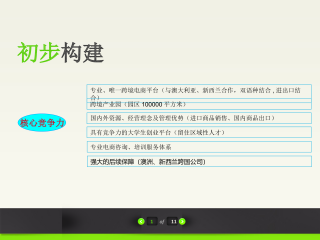
 2025-01-09 27
2025-01-09 27 -
跨境电商方案范文VIP免费
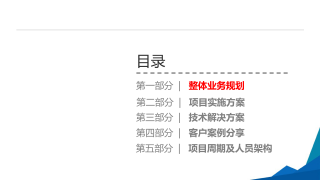
 2025-01-09 14
2025-01-09 14 -
创业计划书VIP免费
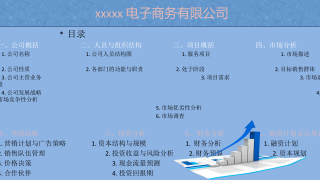
 2025-01-09 18
2025-01-09 18 -
xx生鲜APP计划书VIP免费

 2025-01-09 12
2025-01-09 12 -
跨境电商创业园商业计划书(盈利模式)VIP免费
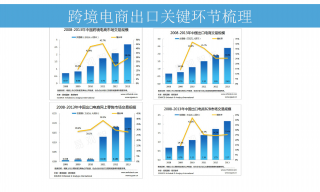
 2025-01-09 8
2025-01-09 8 -
跨境电商计划书VIP免费
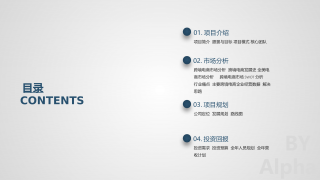
 2025-01-09 13
2025-01-09 13 -
绿色食品电商平台项目计划书VIP免费

 2025-01-09 22
2025-01-09 22 -
农产品电子商务商业计划书VIP免费
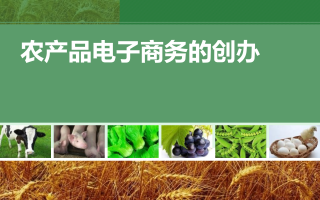
 2025-01-09 9
2025-01-09 9 -
农村电商平台商业计划书VIP免费
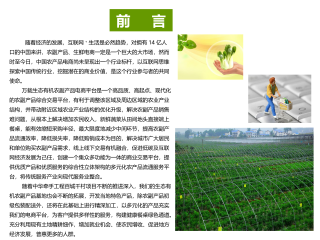
 2025-01-09 13
2025-01-09 13 -
生鲜商城平台商业计划书VIP免费
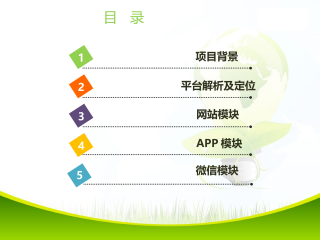
 2025-01-09 21
2025-01-09 21
作者:牛悦
分类:高等教育资料
价格:15积分
属性:152 页
大小:17.31MB
格式:PDF
时间:2024-11-11


